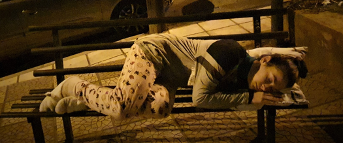
“I really want to participate in your research, really, I just don’t know what to say … nothing comes out.”
My research started when in our Encounters group, we put the word ‘community’ next to the word ‘encounters’. 10 artists, about 10 months away from art, and therefore away from work, we wondered how the last year is reflected. A year without a place, at least as we knew it.
There was an automatically positive response to my call and true joy that, even so, under these circumstances, we would collaborate again, coexist in an imaginary project, an intangible performance: a collection of texts, photos and videos. All this, everything that we finally collected, in a different case would be the raw material for the composition of a performance, which would take place in Athens or Thessaloniki, probably in a theatre or another art venue. Now, and since due to covid restrictions we lack the unifying factor of acting together, they will probably remain unrelated parts, excerpts, of an intangible whole. Being accustomed to the physical- as opposed to the digital- spaces and to a job in which ‘encounters’ entail physical contact, action-reaction and interdependent timing, switching to the digital world, left my personal community of performing artists with the bewilderment of lack of object. This period is characterised by all the informants as unproductive in terms of artistic creation.
The acceleration of the digital transformation of the world, with the outbreak of the pandemic and the conceptualization of economic and social life through digital platforms give the feeling of a speeding up world, in which the performing artists hover somewhere in between: the earth and the sky, the old and the new, reality and art, the stage and the zoom windows.
Efforts are being made to translate theater and dance in some kind of digital form, with the help of filming or live streaming, or even by experimenting on the interaction between dancers and digital co-dancers. Still, structural factors of the performing arts seems to be challenged: space, time, relationships, contact, interaction. Furthermore, rehearsal time is limited to a minimum, just like the duration of the performances – there is great fatigue from the extensive use of screen and this is absolutely crucial for the productions that are addressed to a digital audience.
Because of inertia, I suppose, I still dream of long letters written on paper, two-volume literature, three-act plays, endless rehearsals before the premiere and everything that makes time flow slowly.
Βy the end of the project I hope to have a more extensive and in-depth record of what digitising the performing arts means for performers during the lockdown but also as a perspective of a practice that is here to stay.
Some of the questions I made – Some of the answers I got
Inside-Outside:
“12:30, after midnight. It should not be as quiet outside as inside me”
“Hide and seek”
“A veil covers us”
“Let the menhir (a single standing stone) leave our shoulders”
Your community:
“All nomads, trying to find a place, to set up their camp in the next village.
And everyone with their noble desire”
“You either love or you do not love. Love is as rough as life itself. And then you dance with your heart!”
Dancing the restricted body:
“From anger to resignation, from resignation to stubbornness, from stubbornness to madness, from madness to silence, from silence to rest, from rest to decision and round and round”
“Body and spirit a broken waltz”
Wow, that video with the pencils is such a brilliant evocation of lockdown. Could easily become an iconic image for the pandemic. It also goes against the idea that all the pandemic produces is stagnation and numbness (as suggested in the opening) — although I think that is definitely a theme to be picked up.
Thank you for your comment, Mattijs! Indeed, what I notice is that underneath the wonder and numbness of the previous period, there is a creative anticipation that will find its words, perhaps, in the following period. That is why this particular project can only be ‘in progress’. However, one can only record the artists’ own words in the present, and, I agree with you, this stagnation you mention can be the raw material for research and art.